"The permit application states “Radium 226, Radium 228, Gross Alpha, and Gross Beta radiation” are present in the water incoming for treatment, and because of this, “SRWR is concerned that concentrations (of radioactive materials) will accumulate in the clarifier sludge, rendering the sludge a radioactive waste.
The document adds that SRWR is considering two different methods to help reduce the radioactivity of the sludge, and that “evaluation is continuing to determine the optimum location for this process and the most appropriate and safest* means for handling and disposing of the waste that would be generated.”*Remember, "safest" doesn't mean safe. It merely means least dangerous.
Here then is the EPA publication on the subject:
Overview
The oil and gas industry provides three-fifths of the energy for the United States. When most of us drive a car, turn on a light bulb, or cook on a stove, a large portion of the energy we use comes from the fossils of plants and animals. While fossil fuels are chemical sources of energy, the processes used to extract them from the earth often generate radioactive waste.
Even though we use them on a daily basis, most people know little about the processes that take oil and gas from the ground to produce energy. These processes may leave behind waste containing concentrations of naturally-occurring radioactive material (NORM) from the surrounding soils and rocks. Once exposed or concentrated by human activity, this naturally-occurring material becomes Technologically-Enhanced NORM or TENORM. Radioactive materials are not necessarily present in the soils at every well or drilling site. However in some areas of the country, such as the upper Midwest or Gulf Coast states, the soils are more like to contain radioactive material.
Radioactive wastes from oil and gas drilling take the form of produced water, drilling mud, sludge, slimes, or evaporation ponds and pits. It can also concentrate in the mineral scales that form in pipes (pipe scale), storage tanks, or other extraction equipment. Radionuclides in these wastes are primarily radium-226, radium-228, and radon gas. The radon is released to the atmosphere, while the produced water and mud containing radium are placed in ponds or pits for evaporation, re-use, or recovery.
The people most likely to be exposed to this source of radiation are workers at the site. They may inhale radon gas which is released during drilling and produced by the decay of radium, raising their risk of lung cancer. ...
Who is protecting you
U.S. Environmental Protection Agency (EPA)
EPA is responsible for setting federal radiation standards for exposure to NORM and TENORM.
EPA develops standards for the oil and gas extraction and production industry under the Clean Air Act, Clean Water Act, Safe Drinking Water Act*, Resource Conservation and Recovery Act and the Comprehensive Environmental Response, Compensation, and Liability Act.
*Please urge Congress to vote for the FRAC Act, removing industry exemptions for hydraulic fracturing! (see sidebar at left)
The States
Each state has one or more programs that address both NORM and TENORM.
Some states have established or set limits to control to TENORM. These limits apply to the oil and gas drilling industry. Most states also control public exposure to radiation through programs implementing the federal Clean Air Act, Clean Water Act and other environmental laws authorized by the EPA.
U.S. Department of Labor (DOL), Occupational Safety and Health Administration (OSHA)
DOL’s Occupational Health and Safety Administration (OSHA) establishes health and safety regulations for the oil and gas extraction, production, and servicing industry. OSHA also issues hazardous information bulletins to inform staff and the public of significant occupational safety and health issues including radiation hazard recognition, evaluation, and control in the workplace.
U.S. Department of Energy (DOE)
DOE provides grants for research on the use and disposal of radioactive materials related to the development of energy sources.
What you can do to protect yourself
Government organizations continue to address potential threats from oil and gas drilling and production for the public health and safety but you can take actions as well for your own health and safety.
Workers in the industry have the potential for overexposure to radioactive material and must stay up-to-date on federal, state, and industry health and safety guidelines. Following these procedures will reduce total on-site exposure. Workers also need to take precautions to avoid bringing radioactive material residue on their clothes and shoes home to their families and neighborhoods.
- Change out of potentially contaminated clothes and shoes before returning to the family car and to your home or office.
- Do not re-use or bring home discarded equipment or material such as pipes, devices, bricks, rocks, or water.
Members of the public should contact their local state geological survey or bureau of health to determine if there is a likelihood of NORM and TENORM occurrence associated with oil and gas production in their state, or area where they live. Until then:
- Limit exposures and disturbance of the production site and any abandoned equipment.
- Do not handle, dispose or re-use abandoned equipment used at drilling sites.
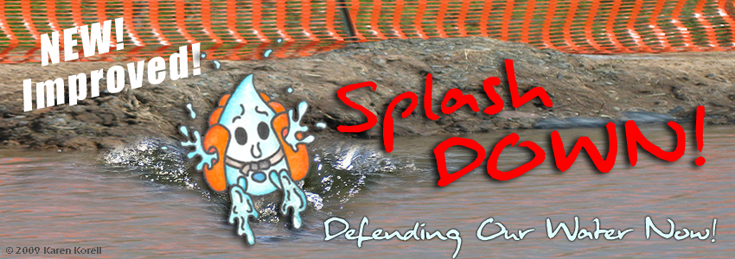



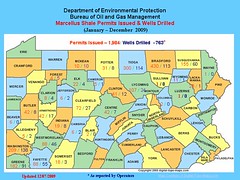

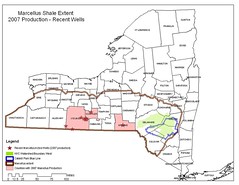

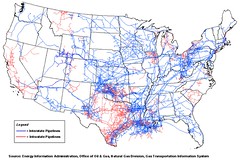
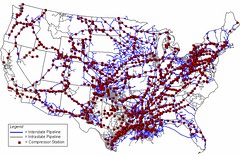



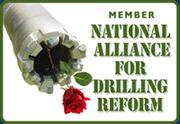





No comments:
Post a Comment